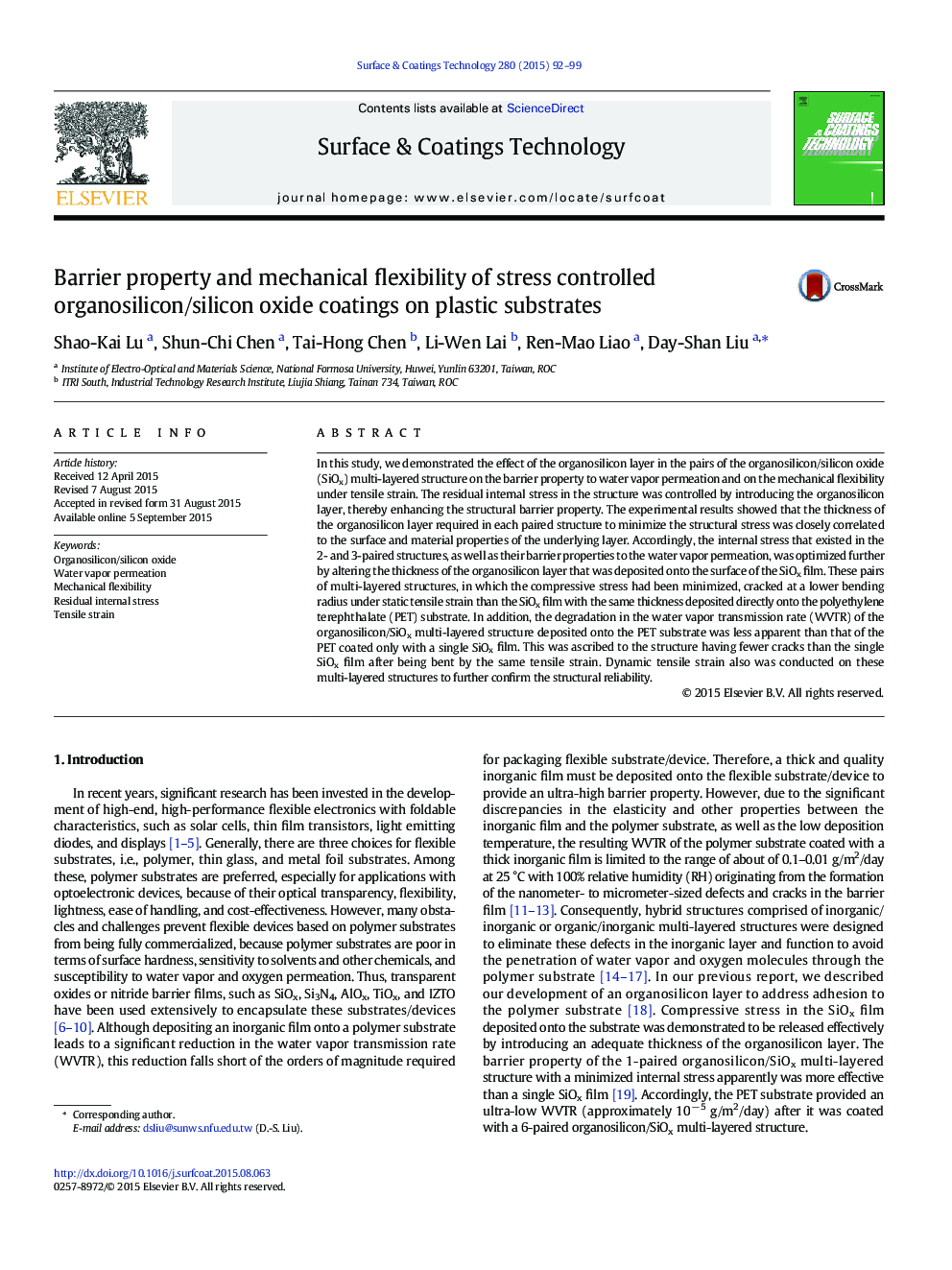| Article ID | Journal | Published Year | Pages | File Type |
|---|---|---|---|---|
| 8026062 | Surface and Coatings Technology | 2015 | 8 Pages |
Abstract
In this study, we demonstrated the effect of the organosilicon layer in the pairs of the organosilicon/silicon oxide (SiOx) multi-layered structure on the barrier property to water vapor permeation and on the mechanical flexibility under tensile strain. The residual internal stress in the structure was controlled by introducing the organosilicon layer, thereby enhancing the structural barrier property. The experimental results showed that the thickness of the organosilicon layer required in each paired structure to minimize the structural stress was closely correlated to the surface and material properties of the underlying layer. Accordingly, the internal stress that existed in the 2- and 3-paired structures, as well as their barrier properties to the water vapor permeation, was optimized further by altering the thickness of the organosilicon layer that was deposited onto the surface of the SiOx film. These pairs of multi-layered structures, in which the compressive stress had been minimized, cracked at a lower bending radius under static tensile strain than the SiOx film with the same thickness deposited directly onto the polyethylene terephthalate (PET) substrate. In addition, the degradation in the water vapor transmission rate (WVTR) of the organosilicon/SiOx multi-layered structure deposited onto the PET substrate was less apparent than that of the PET coated only with a single SiOx film. This was ascribed to the structure having fewer cracks than the single SiOx film after being bent by the same tensile strain. Dynamic tensile strain also was conducted on these multi-layered structures to further confirm the structural reliability.
Related Topics
Physical Sciences and Engineering
Materials Science
Nanotechnology
Authors
Shao-Kai Lu, Shun-Chi Chen, Tai-Hong Chen, Li-Wen Lai, Ren-Mao Liao, Day-Shan Liu,
